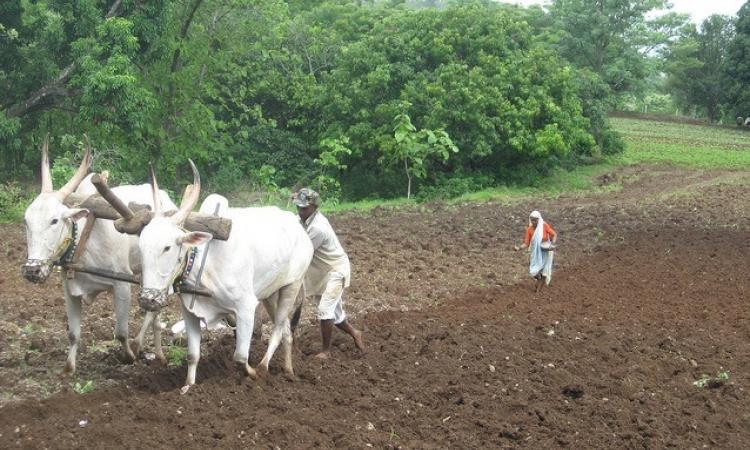
Vidarbha region in Maharashtra has continued to be in the news over the years because of its severe agrarian crisis with reports of severe droughts, loss of crops and increasing farmer suicides. Relief packages have done very little to solve these problems.
The paper titled 'Generating agrarian dynamism - Saurashtra’s lessons for Vidarbha' published in the Economic and Political Weekly, reflects on the developmental background of Vidharbha and explores the reasons for this crisis in the agricultural sector. It explores solutions that can help bring Vidarbha out of this crisis.
Reasons for the crisis and similarities with Saurashtra
Studies have argued that it is the political economy of development in the different parts of Maharashtra that have contributed to the agrarian stagnation in Vidarbha. For example:
- the very regressive zamindari system that has dampened investment and supported feudal structures,
- institutional underdevelopment leading to dependence of farmers on traditional trade for input and output markets and dependence on moneylenders for credit,
- divisive societal forces, partisan politics with dominance of western Maharashtra and neglect of the region, and
- developmental backlog and harsh terrain
are some of the factors that have created circumstances leading to the agrarian crisis in Vidarbha.
The article compares Vidarbha with Saurashtra in Gujarat, which it argues has a very similar historical and developmental background such as lack of progressive governance, regressive property institutions, the feudal zamindari system, divisive social structures, inhospitable circumstances for farmer cooperatives, poor irrigation development as well as harsh climate and agrarian landscape despite which its agricultural growth accelerated in the early 1990s.
The rapid agricultural growth in Saurashtra
Since 2000, Saurashtra's agricultural growth has been accelerating at a more rapid pace. Cotton production has more than doubled in the past 15 years. Saurashtra has also undergone a dairy boom as a result of sustained intensification of its crop-milk mixed farming system. However, Vidarbha’s agriculture remains stagnated.
The article argues that this has to do with the smart, farmer-friendly government policies that have stimulated private capital formation in agriculture in Saurashtra. A number of government actions have played a strong catalytic role in the region’s agricultural growth, four of which include:
- A mass movement in Saurashtra for rainwater harvesting and decentralised groundwater recharge;
- The launching of the state government’s Jyotigram scheme, which separated agricultural feeders from other rural feeders after which farm connections obtain eight hours of uninterrupted power supply of full voltage every day. While the recharge movement has improved groundwater availability, reliable power supply has helped Saurashtra’s farmers to convert groundwater into reliable irrigation;
- The availability of reliable groundwater irrigation has enabled Saurashtra to transform Bt cotton into a roaring success, and to increase its area under other irrigated food and cash crops such as wheat, castor, cumin, onion and chilli; and
- The dairy boom due to sustained intensification of crop-milk mixed farming system and the availability of reliable markets and better prices for milk at farmers’ doorsteps.
What can be done to improve the situation of Vidarbha?
Vidarbha’s situation is a complete contrast to Saurashtra’s. Vidarbha has been promised canal irrigation projects that have consumed funds but have failed to deliver water.
The article argues that Vidarbha has been at the receiving end of doles, packages and a lot of lip service but what will impart it dynamism is proactive, vigorous, and farmer-friendly governance of its agricultural economy.
It ends by proposing three quick-acting initiatives to jump-start Vidarbha’s agriculture:
- Investing in community-based recharge structures as a mass movement to improve the dry-season availability of groundwater in Vidarbha’s 3.8 lakh irrigation wells.
- Ensuring six to eight hours of full-voltage, uninterrupted power supply to agriculture that can transform Bt cotton into a boon from the bane it is now.
- Inviting and incentivising, Amul and the NDDB to compete for milk procurement in rural Vidarbha.
Another paper 'Policy Insights for Vidarbha’s Economy' published in the Economic and Political Weekly in response to the above paper argues that the authors’ assertion
that stepping up public investment in agriculture is not the only way and that smart, farmer-friendly government policies that have stimulated private capital formation in agriculture is questionable.
It also challenges the author's perspectives on “special packages” and argues that these packages were more of crisis-intervention palliatives to help indebted farmers come out of their debt trap and they have certainly helped in reducing the number of suicides.
Please download copies of the two papers below.